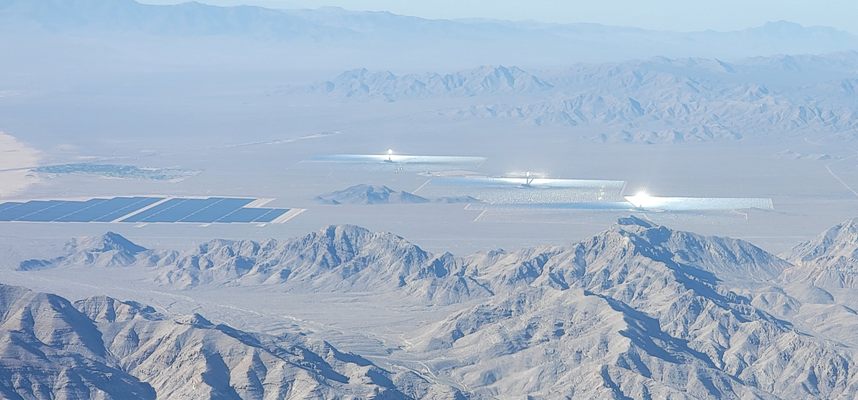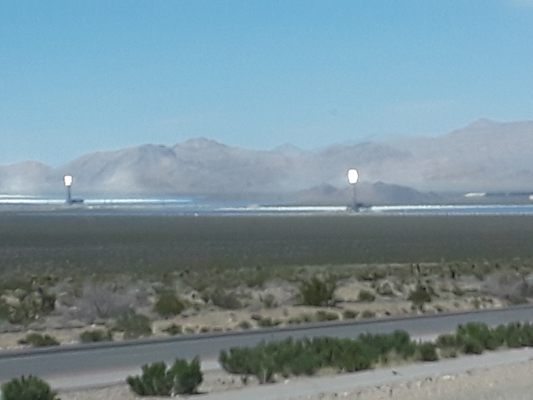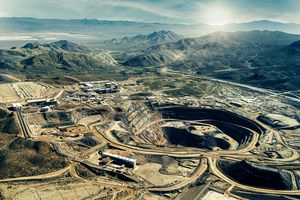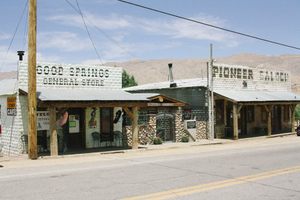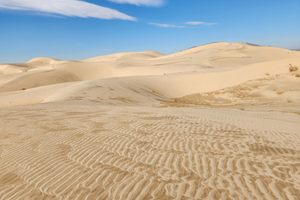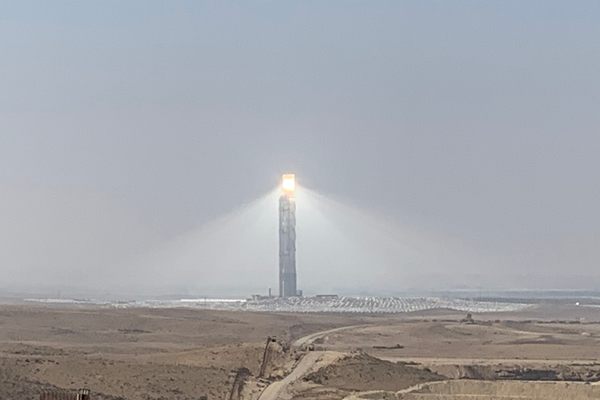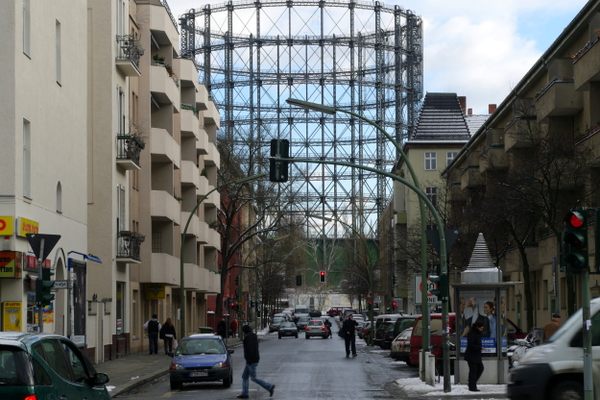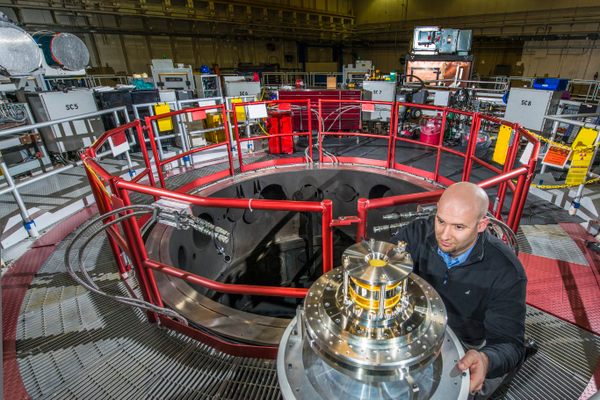About
Driving down I-15 on the California-Nevada border, just 43 miles southwest of Las Vegas, you'll see three tall, brightly glowing towers rising from the Mojave Desert, surrounded by an intimidating field of glass. A closer look reveals thousands and thousands of panels—and a whole mess of problems.
The Ivanpah Solar Facility is the largest concentrated solar plant in the world, and when it opened in 2014 it promised to be the future of renewable energy. Solar thermal plants (like Solar One and Solar Two) use thousands of large moving mirrors, called heliostats, that track the sun and focus the reflected sunlight toward tall towers. The heat then boils water in the tower to create steam, which turns a turbine to generate electricity.
Ivanpah consists of three 459-foot "power towers" on a 4,000 acre tract of land in the Mojave Desert. The receivers atop the towers become so bright they appear to glow—a remarkable and futuristic view for travelers on the freeway.
Unfortunately, the solar farm has been riddled with problems from the get-go. Ivanpah promised to generate one terawatt-hour of energy per year, but that plan immediately fell flat. The plant failed to generate enough power to meet its electricity contract and was faced with shutdown.
While it's still up and running, the troubles don't end there. Ivanpah also sucks up scarce water resources for its boilers, and requires more natural gas than was expected in order to power itself up each morning, leading to greenhouse gas emissions that offset much of the benefits of clean solar power. And the biggest problem is the facility is simply not generating enough power to be worth the cost, especially as other alternative energy options like photovoltaic solar come down in price.
On top of all that, the plant has faced criticism for encroaching on local wildlife populations such as the desert tortoise, and killing birds that are burnt by the solar towers' beams of heat while chasing insects that are attracted to the bright light. (Some environmental studies have discounted this claim, but it certainly didn’t help Ivanpah's PR.)
Most recently, Ivanpah made headlines again, and unfortunately not the good kind. In May 2016, due to a technical malfunction, the legs of the heliostats failed to track the sun properly resulting in sunlight being cast on the wrong part of the tower, which caused a fire and melted some of the tower’s infrastructure.
The whole mess has been enough to put the nation off concentrated solar power almost completely. Many solar thermal projects have been stalled or cancelled in light of Ivanpah's rocky start. While concentrated solar plants are still planned for other parts of the world, photovoltaic solar is winning out in the U.S. In the California desert what was once a beacon of hope for the future of energy now looks more like a glittery, glowing warning sign.
Related Tags
Community Contributors
Added By
Edited By
Published
September 1, 2016
Sources
- https://en.wikipedia.org/wiki/Ivanpah_Solar_Power_Facility
- http://www.makeuseof.com/tag/the-energy-of-the-future-today-how-do-solar-panels-and-heliostats-work/
- https://en.wikipedia.org/wiki/Solar_power_by_country
- http://www.wired.com/2016/05/huge-solar-plant-caught-fire-thats-least-problems/
- https://www.google.com/?ion=1&espv=2#q=46000%2F365
- http://breakingenergy.com/2014/10/29/at-ivanpah-solar-power-plant-energy-production-falling-well-short-of-expectations/
- http://www.wired.com/2016/05/huge-solar-plant-caught-fire-thats-least-problems/
- https://www.technologyreview.com/s/601083/ivanpahs-problems-could-signal-the-end-of-concentrated-solar-in-the-us/







